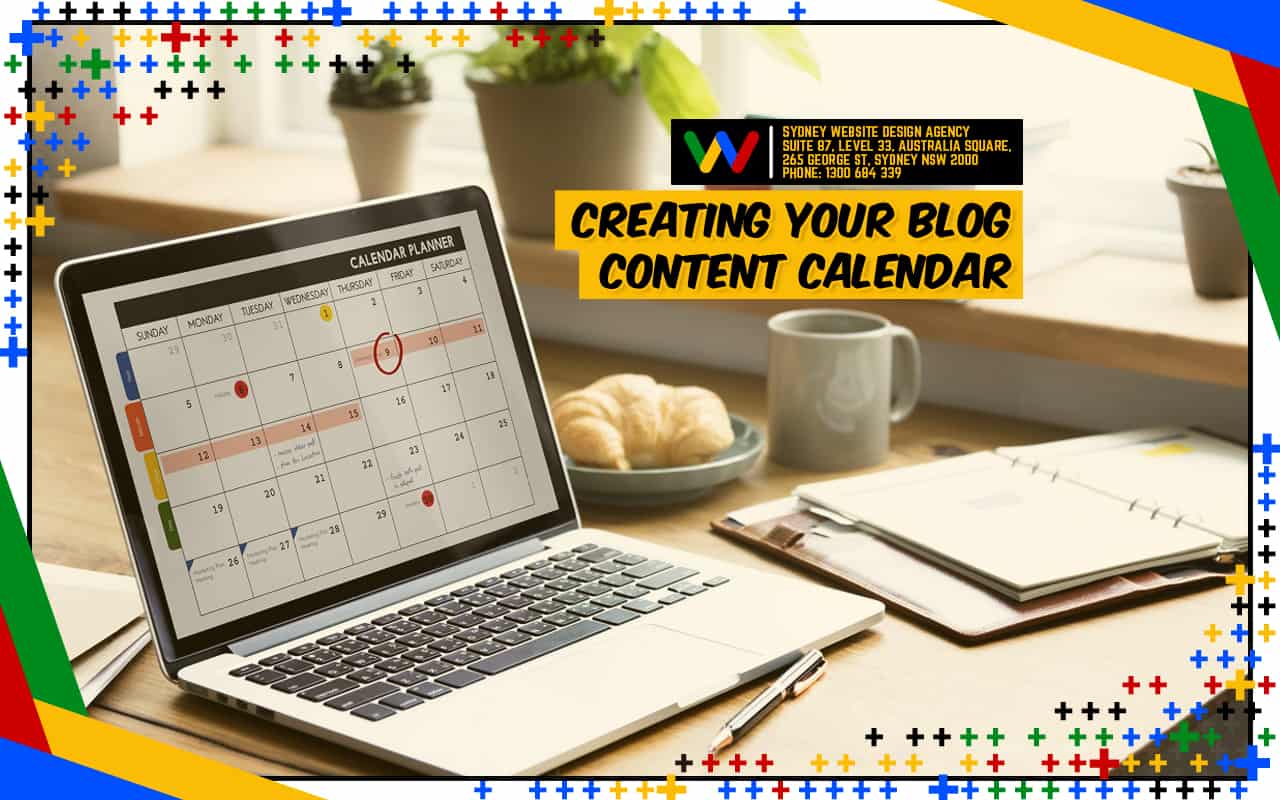How Blog Writing Impacts Customer Engagement and Generates Leads

The power of a well-written blog cannot be underestimated in today’s digital world. By sharing useful information and solving customer problems, a business blog can not only increase website traffic and establish industry authority, but also directly impact customer engagement and generate leads.
Having a business blog is vital for customer engagement and lead generation. By producing valuable content, you can establish yourself as an industry leader and attract potential clients. A well-thought-out blogging strategy can also drive traffic to your website, resulting in higher conversion rates and ultimately boosting your bottom line.
However, consistently creating compelling and relevant blog posts can be a challenge for small businesses. This article will discuss the benefits of business blogging and offer tips on crafting successful content that engages customers and generates leads.
In this post, we will discuss the benefits of having a business blog and provide tips for creating successful content that drives customer engagement and leads. From understanding your audience to regularly updating your blog, we’ll cover all the essentials for using your blog to drive results for your business.
Introduction
A quality business blog not only attracts potential clients, but also keeps them engaged and generates traffic. By starting a conversation with your prospects, you open the door to selling while also raising awareness of your company and increasing web traffic that impacts the business growth.
Your blog exists for your customers, not for you as the writer. The best blogs provide new perspectives on an industry or solve a customer problem.
We will discuss the benefits of having a business blog and provide tips for creating successful blog content. From increasing website traffic to establishing authority in your industry, a well-executed business blog can have many positive outcomes for your company. However, many small businesses struggle with finding the time or inspiration for consistent blog writing. This post will offer advice on how to overcome these challenges and create a successful business blog.
Table of Contents
advWhy Blog Writing Is Essential for Business?

Businesses of all sizes can benefit from having a blog. In fact, blogging is essential for driving results in today’s digital world. By sharing valuable information and solving customer issues, businesses can not only increase website traffic, but also directly impact customer engagement and generate leads.
A business blog can be a compelling marketing tool. It can help you attract new customers, build trust and credibility, and boost your bottom line. But to reap the benefits of blogging, you need to produce high-quality content that resonates with your audience.
Is blogging still worth it for your marketing and business needs? Here are its benefits.
Drives Organic Traffic to Your Website
Not many people think about how often they update the pages on their website, but it’s probably not that frequent.
We all know that blogging is a fantastic way to build an audience and establish trust.
Every blog post is another indexed page on your website, which gives you a higher chance of showing up on the search engine results page and gaining organic traffic.
Let’s say you want to rank for the keyword “social media marketing.” If you have a blog post with that title, it’s much more likely to show up in the search results than your website’s About page.
More indexed pages also mean a greater chance that one of your pages will be found by someone who is already familiar with your brand but wasn’t specifically searching for you.
For example, if someone searches for “how to start a blog,” they might find one of your blog posts and then decide to check out your website. This is called organic traffic, and it’s valuable because it has a higher conversion rate than other types of traffic.
A business blog can help you attract organic traffic to your website, which can lead to more customers and sales.
Builds Trust and Credibility
One of the most important benefits of blogging is that it helps you build trust and credibility with your audience.
When you consistently provide helpful, informative content, people will start to see you as an expert in your industry. As a result, they’ll be more likely to do business with you when they need the products or services you offer.
People are much more likely to buy from companies that they know, like, and trust. A business blog can help you build that trust by establishing your expertise and thought leadership.
Think about it from your own perspective. If you’re searching for information about a particular topic, you’re more likely to trust someone who has written extensively about it than someone who doesn’t have any articles or blog posts on the subject.
By blogging, you can position yourself as an expert in your industry and build trust with your audience.
Generates Leads and Sales
A business blog is not only a great way to generate leads and sales, but also provides an opportunity for you to include calls to action in your posts. By doing so, you can nudge your readers one step closer in their buyer’s journey – whether that means subscribing to your email marketing campaigns or making a purchase.
For example, if you’re a real estate agent, you might include a CTA in your blog post about the process of buying a home. That CTA could be something like, “If you’re ready to start looking for your dream home, I’d be happy to help. Schedule a free consultation today.”
By including CTAs in your blog posts, you can turn casual readers into leads and customers.
Keeps Your Website Updated
Another important benefit of blogging is that it helps you keep your website updated with fresh content.
Your website is one of your most critical marketing assets, so it’s essential to keep it up-to-date with the latest information about your products and services.
A blog is a great way to do that. Every time you publish a new blog post, it’s like adding a new page to your website. This helps improve your SEO and keep your website relevant.
Encourages Social Shares
Blogging also encourages social shares.
When you write helpful, informative content, people are more likely to share it with their friends and followers. This can help you reach a larger audience and generate more leads and sales for your business.
Plus, every time someone shares one of your blog posts, they’re essentially giving your business free advertising.
Blog Content Can Be Repurposed for Social Media Content
Another great thing about blog content is that it can be repurposed for social media content. A great blog post can be used in many ways for a long period of time and still be relevant to your audiences. Your first blog post can be used in your Facebook, Instagram, and LinkedIn, even if it was written years ago.
For example, let’s say you write your own blog about the top 10 ways to improve your website’s SEO. You can then share an excerpt from that blog post on Twitter, along with a link to the full article.
Or, you could create a video based on the blog post and share it on Youube. The sky’s the limit when it comes to repurposing your blog content for social media. Writing blogs posts for your brand gives you endless access to content you can use for other marketing purposes.
Nurture Your Leads to Become Customers
Finally, a business blog can help you nurture your leads until they’re ready to become customers.
How? By providing helpful, informative content at every stage of the buyer’s journey.
For example, someone who is just starting their research on a particular topic will be looking for different information than someone who is ready to buy.
By creating blog posts that target each stage of the buyer’s journey, you can keep your leads engaged and guide them toward becoming customers.
Creates Long-Term Results
Unlike paid advertising, which stops generating results as soon as you stop paying for it, blogging can provide long-term results for your business.
Every blog post you write is like an asset that you can continue to generate leads and sales from long after it’s been published.
Plus, the more blog posts you have, the more traffic you’re likely to get over time. So, if you’re looking for a marketing activity that will provide ongoing benefits for your business, look no further than blogging.
Helps In Link Building
One of the most important aspects of search engine optimisation is link building. Link building is the process of getting other websites to link to your website. It is also an opportunity to get your web pages on search engines.
The more high-quality links you have pointing to your website, the higher your website will rank in search engine results pages (SERPs). The better your writing skills are, the more you can become closer to your target audience.
And guess what? Blogging can help with that. Having a blog domain with high-quality written blogs can do a lot of good for your business.
How? By writing helpful, informative blog posts, you can encourage other websites to link to your content. This can help improve your SEO and generate more traffic for your website.
Blogging is a great way to improve customer engagement and generate leads for your business. It helps you build trust and credibility with your audience, keeps your website updated with fresh content, and encourages social shares. Plus, it provides an opportunity to nurture your leads until they’re ready to buy.
If you’re not blogging already, now is the time to start. Your business will thank you for it!
Best Types of Blog for Your Business

Now that we’ve gone over some benefits of blogging, let’s take a look at the different types of quality blog posts you can use for your business. With proper keyword research and a great understanding of your target audience, you can easily draw in organic traffic and gain trust of your potential customers with blog content.
Product Blogs
If you have a product-based business, then a product blog is one of the blog post ideas to showcase your products and educate your audience about their features and benefits.
A product blog is typically written by the company’s marketing team and focuses on promoting specific products. However, they can also be written by customers or third-party reviewers.
For example, if you sell software, you could write a blog post that showcases how your software can help businesses save time and money. Or, if you sell fitness equipment, writing blog posts about how to use a treadmill would be helpful.
The sky’s the limit when it comes to product blogs. Just make sure you’re providing helpful, informative content that will help your audience make an informed decision about your product.
How-To-Post Blogs
How-to blogs are another great option for businesses. As the name suggests, how-to blogs provide step-by-step instructions on how to do something.
Some blog post examples are the following – if you sell kitchen appliances, you could write a blog post about how to use a particular appliance. Or, if you sell beauty products, you could write a blog post about how to apply makeup for a natural look.
“How to Blogs” are a great way to engage your audience and show them how your products can be used. They’re also a great opportunity to include product links, which can help generate leads and sales. It is a content marketing strategy you can use for your audiences to learn the value of your products and services to their lives.
Industry News Blogs
If you want to position yourself as an industry leader, then you need to start an industry news blog.
An industry news blog covers the latest news and developments in your industry. It’s a great way to build trust and credibility with your audience by showing them that you’re up-to-date on the latest trends.
It’s also a great way to generate traffic from people who are searching for the latest industry news.
To get started, simply set up a Google Alert for your industry keywords and start writing about the latest news in your industry.
Customer Success Stories
Customer success stories are another great type of blog for businesses. These types of blogs showcase how your products or services have helped real people achieve their goals.
For example, if you sell software, you could write a blog post about how your software helped a customer save time or money. Or, if you sell fitness equipment, you could write a blog post about how your products helped a customer get in shape.
Customer success stories are a great way to show potential customers how your products can help them achieve their goals. They’re also a great opportunity to include product links, which can help generate leads and sales.
Tips and Tricks Blogs
If you want to position yourself as an expert in your industry, then you need to start a tips and tricks blog.
A tips and tricks blog covers the latest tips and tricks for your industry. It’s a great way to engage your audience and show them that you’re an expert in your field.
It’s also a great way to generate traffic from people who are searching for tips and tricks for their industry.
To get started, simply set up a Google Alert for your industry keywords and start writing about the latest tips and tricks in your industry.
Q&A Blogs
Q&A blogs are a great way to engage your audience and show them that you’re an expert in your field.
A Q&A blog is simply a blog post that answers common questions people have about your industry. For example, if you sell software, you could write a blog post that answers common questions people have about software development. Or, if you sell fitness equipment, you could write a blog post that answers common questions people have about working out.
Q&A blogs are a great way to engage your audience and show them that you’re an expert in your field. They’re also a great opportunity to include product links, which can help generate leads and sales.
Reviews
If you want to generate leads and sales, then you need to start writing reviews.
Product reviews are a great way to show potential customers how your products compare to other products on the market. They’re also a great opportunity to include product links, which can help generate leads and sales.
To get started, simply find a few products in your industry that you can review. Then, write an honest review of each product. Be sure to include your thoughts on the product’s features, benefits, and drawbacks.
You can also include product links in your reviews, which can help generate leads and sales.
There are many other types of blog you may think of – a “Thank You” blog for the success of your business. You can create a historical blog that brings your audiences back to who your brand was and how you became the brand that you are right now. Again, the options are endless. It is all up to you on how you will create and deliver your blog to your audiences.
Creating Your Blog Content Calendar

If you don’t have a content calendar, then it’s easy to let your blog fall by the wayside. You might start off with good intentions, but without a plan in place, it’s easy to get side tracked and forget to publish new content.
A content calendar ensures that content is actually being published on a regular basis. It gives you a deadline to work towards and keeps you accountable.
It Makes it Easier to Collaborate with The Team
If you have a team of writers, editors, or designers, then a content calendar makes it easier to collaborate with them.
For example, let’s say you’ve assigned a writer to write a blog post about a new product launch. If you have a content calendar in place, then the writer will know exactly when the post is due and can plan accordingly.
Conversely, without a content calendar, the writer might not know when the post is due and could miss the deadline. This would cause problems for everyone involved.
A content calendar helps to keep everyone on the same page and ensures that deadlines are met.
It Helps You Stay Focused
When you’re first starting out, it’s easy to get caught up in the excitement of publishing new content. However, this can often lead to scattered thinking and a lack of focus.
A content calendar helps you stay focused by giving you a plan to follow. It ensures that you’re only working on one thing at a time and prevents you from getting side tracked.
This is especially important if you have plenty of ideas for blog posts, but find it difficult to actually sit down and write them.
Gives A Better Picture of the Upcoming Content
If you’re working on a long-term content marketing strategy, then a content calendar gives you a better picture of the upcoming content.
This is important because it allows you to see how your content is going to fit together and achieve your overall goals.
It also allows you to make sure that there are no gaps in your content. For example, if you have a series of blog posts planned but realise that there’s no post scheduled for the month of June, then you know that you need to write one.
Allows You To See What’s Working (And What’s Not)
Finally, a content calendar allows you to see what’s working and what’s not.
For example, let’s say that you have a blog post scheduled for every Monday but find that your traffic spikes on Wednesdays. This could indicate that you need to move your blog posts to Wednesday or write an additional post for that day.
On the other hand, if you notice that your traffic spikes on the weekends, then you might want to consider publishing more content on those days.
How to Create a Blog Content Calendar

Now that we’ve gone over the importance of having a content calendar, it’s time to actually create one. Below is a step-by-step guide that will help you get started.
1. Choose a format
The first step is to choose a format for your content calendar. There are many different ways to do this, but we recommend using a spreadsheet or Google Calendar.
2. Decide on a posting schedule
The next step is to decide on a posting schedule. This will depend on how often you want to publish new content. If you’re just starting out, then we recommend publishing one new blog post per week.
As you become more comfortable with blogging, you can gradually increase the frequency of your posts. Just be sure not to bite off more than you can chew!
3. Fill in the details
Once you have a format and posting schedule, it’s time to start filling in the details. For each piece of content, be sure to include the following:
- Title
- Publication date
- Author
- Topic
- Target audience
- SEO keywords
- Outline
4. Make it visually appealing
One of the best ways to make your content calendar more visually appealing is to add images. For each piece of content, you can include an image that represents the topic.
5. Share it with your team
Once you’ve created your content calendar, be sure to share it with your team. This will help ensure that everyone is on the same page and knows what needs to be published when.
6. Review and adjust as needed
Finally, be sure to review your content calendar on a regular basis and make adjustments as needed. As your traffic patterns change, you might need to revise your posting schedule or the topics of your blog posts.
By following these steps, you can easily create a content calendar that will help you stay focused and organised as you manage your blog.
A content calendar is a valuable tool that can help you fine-tune your content strategy and ensure that you’re getting the most out of your blog.
How To Create a Blog Writing Framework

Creating a blog writing framework is one of the most important steps you can take to improve your blogging productivity.
A blog writing framework is simply a document that outlines the structure of your blog posts. It includes things like the length of the post, the format, the topics you’ll cover, and anything else that will help you write more efficiently.
Creating a framework before you start writing can save you a lot of time in the long run. It’s much easier to edit a document that already has a basic structure in place than it is to try to piece one together after the fact.
Not sure where to start? Below is a basic template that you can use to create your own blog writing framework.
Blog Writing Framework Template
- Post title
- Length (word count)
- Format (e.g., listicle, how-to guide, case study)
- Topics to be covered
- Target audience
- SEO keywords
- Call to action
Once you have a framework in place, all you need to do is fill in the blanks each time you sit down to write a new blog post. This will help you stay focused and avoid getting bogged down in the editing process.
The Benefits of Having a Blog Writing Framework
Creating a blog writing framework has several benefits, including:
- It saves you time. By having a structure in place before you start writing, you can save yourself a lot of time in the editing process.
- It keeps you focused. A framework helps to keep you focused on the task at hand and prevents you from straying off-topic.
- It makes it easier to collaborate with others. If you’re working with a team, a blog writing framework makes it much easier for everyone to contribute and stay on the same page.
How to Create a Blog Writing Framework
Creating a blog writing framework is relatively simple. Just follow the steps below:
1. Choose a format
The first step is to choose a format for your framework. We recommend using a Google Doc or spreadsheet so that it’s easy to share with others.
2. Decide on the basics
Once you have a format in place, it’s time to start filling in the details. Begin by deciding on the basics, such as the title, length, and topics you’ll be covering.
3. Add in any additional details
Next, add in any additional details that will help you write more efficiently. This might include things like target audience, SEO keywords, or a call to action.
4. Share it with your team
If you’re working with a team, be sure to share your blog writing framework with them. This will help everyone stay on the same page and ensure that everyone is aware of the structure of your posts.
5. Review and adjust as needed
Finally, be sure to review your blog writing framework on a regular basis and make adjustments as needed. As your traffic patterns change, you might need to revise your posting schedule or the topics of your blog posts.
By following these steps, you can easily create a blog writing framework that will help you stay focused and organised as you manage your blog.
Best Tips When Writing Blogs for Business

Now that we’ve gone over how to create a blog writing framework, let’s take a look at some tips that will help you write more effectively:
1. Keep it short and comprehensive
When it comes to business blogging, less is definitely more. In general, your posts should be around 500 words. This is just long enough to get your point across without boring your readers.
2. Write for your audience
It’s important to remember who you’re writing for when creating content for your business blog. Write in a way that will appeal to your target audience and avoid using jargon or technical terms.
3. Get to the point
Your readers are busy people, so make sure you get to the point quickly. Start with a strong headline and lead with the most important information.
4. Use visuals
Make your posts more visually appealing by adding images, infographics, or videos. This will help break up your text and keep your readers engaged.
5. Promote your content
Once you’ve published a new blog post, be sure to promote it through your social media channels and email list. This will help ensure that as many people as possible see your content.
By following these tips, you can create high-quality content that will engage your readers and promote your business.
FAQs Blog Writing

1. What are some tips for writing a business blog?
- Keep it short and sweet
- Write for your audience
- Get to the point
- Use visuals
- Promote your content
2. How often should I post on my business blog?
3. What is a blog writing framework?
4. Do I need to hire a professional writer for my business blog?
5. How can I promote my business blog?
How to Start Blog Writing for Your Business

In conclusion, starting a business blog can have numerous benefits for your company. It can increase website traffic, establish authority in your industry, and start a conversation with potential customers.
However, it is important to remember that the success of your blog lies in creating valuable content for your readers. This may require some brainstorming and planning, but with dedication and consistency, you can effectively use a business blog to drive growth for your company.



















































